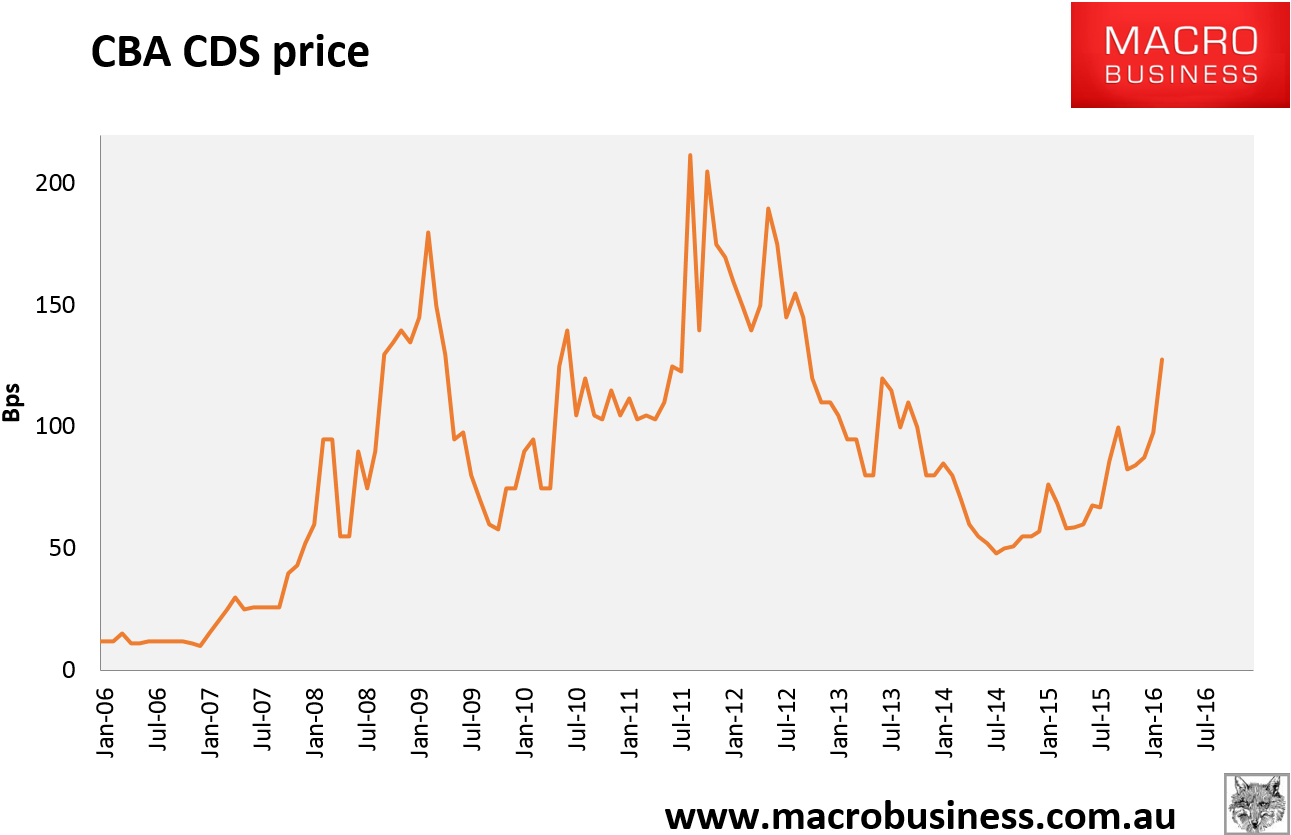The Australian bank funding cost rocket is entering the outer atmospheres now, up another 4% yesterday and in clear crisis territory now at 128bps:

As you can see, we have only been here before during the intense phases of previous crises. CBA acknowledged the threat yesterday, from Banking Day:
Repricing of Commonwealth Bank’s investment lending book late last year is helping to insulate the bank from elevated funding costs in wholesale markets, with the bank reporting a stable net interest margin for the half year to December 2015.
Bank management presented a largely sanguine attitude to the widening of spreads on bank funding costs rattling global credit markets of late.
CBA’s net interest margin was flat on the June 2015 half at 2.06 per cent, but down five basis points on the December 2014 half.
David Craig, the bank’s chief financial officer, told an investor briefing yesterday, in connection with credit market upheavals, that “we do not see trends that are impacting us.
“We remain pre-funded. We have done a substantial percentage of our funding this year,” he said.
CBA treasurer Paolo Tonucci said the “impact of wholesale funding costs has been modest,” an observation that may take into account the overall decline in bond yields as capital markets recalibrate in the face of collapsing equity values.
“If it continues, it will have an impact,” Tonucci said.
And it is clear what the bank will do about it: reprice lending books. That is, hike rates.

